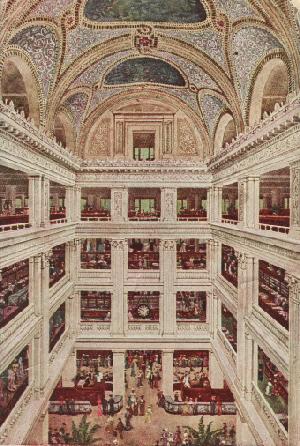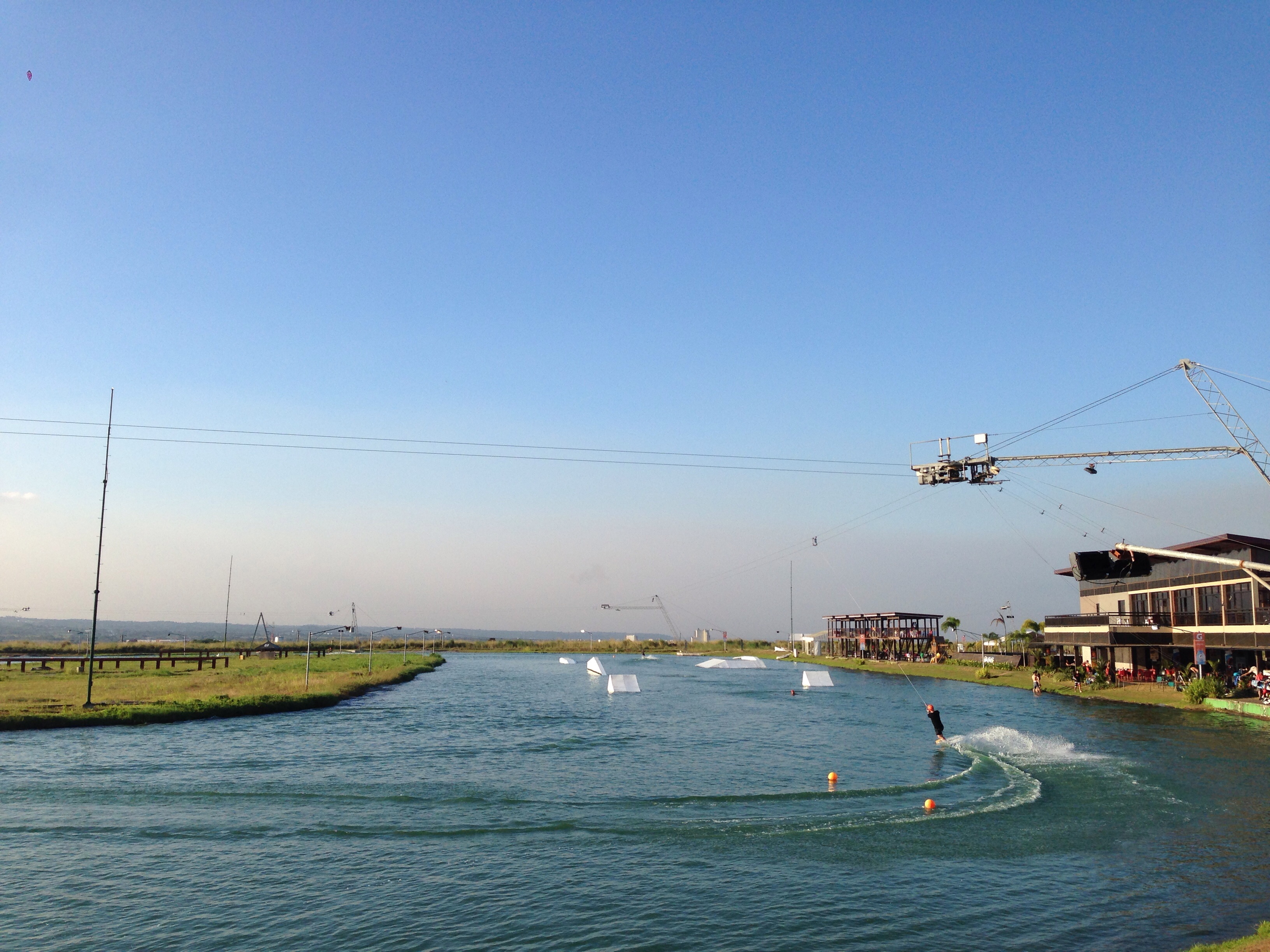|
Landmark (department Store)
Landmark (formerly known as The Landmark) is a Filipino department store and supermarket chain run by Citysuper Incorporated, the holding company of the Landmark Corporation, owned by Enrique Cheng. It currently has multiple operational department stores and supermarkets across Metro Manila and one provincial branch located in Santa Rosa, Laguna, Santa Rosa, Laguna (province), Laguna. History The Landmark opened in 1988 on the ruins of the Makati Supermart, which was destroyed by a fire in 1985 and demolished soon after, in Makati Commercial Center (present-day Ayala Center), Makati. It was founded by Teddy Keng, the son of the founders of Anson's Emporium (now Anson's), whose second store was located at Arnaiz Avenue south of the edifice. The Makati flagship branch was the third department store established within the Ayala Center after The SM Store, SM Makati and Rustan's, and is known for having some items lower priced than most department stores in Metro Manila. The Makati br ... [...More Info...] [...Related Items...] OR: [Wikipedia] [Google] [Baidu] |
Department Store
A department store is a retail establishment offering a wide range of consumer goods in different areas of the store under one roof, each area ("department") specializing in a product category. In modern major cities, the department store made a dramatic appearance in the middle of the 19th century, and permanently reshaped shopping habits, and the definition of service and luxury. Similar developments were under way in London (with Whiteleys), in Paris () and in New York City ( Stewart's). Today, departments often include the following: clothing, cosmetics, do it yourself, furniture, gardening, hardware, home appliances, houseware, paint, sporting goods, toiletries, and toys. Additionally, other lines of products such as food, books, jewellery, electronics, stationery, photographic equipment, baby products, and products for pets are sometimes included. Customers generally check out near the front of the store in discount department stores, while high-end traditional d ... [...More Info...] [...Related Items...] OR: [Wikipedia] [Google] [Baidu] |
Mindanao Avenue
Mindanao Avenue () is an eight-to-ten-lane divided avenue connecting EDSA and NLEX and is a part of Circumferential Road 5 (C-5) in Metro Manila, Philippines. It is one of the three parallel roads that connects Tandang Sora and Congressional Avenues (Visayas Avenue and Luzon Avenue were the others); that is why it was named after the southernmost mainland of the Philippines, Mindanao. It used to be a highway connecting North Avenue and Congressional Avenue, but as a part of the C-5 projects, Mindanao Avenue was extended to EDSA in the south and to Quirino Highway to the north. The new roads opened in 2000. Another road in Quezon City, also named Mindanao Avenue, starts in Barangay Santa Monica, crosses Commonwealth Avenue and Regalado Highway, and terminates at a dead end at the School of Saint Anthony in Barangay Greater Lagro, Quezon City. That road is not connected to the original Mindanao Avenue but was planned to be the same road according to the 1949 Plan of Quezo ... [...More Info...] [...Related Items...] OR: [Wikipedia] [Google] [Baidu] |
EDSA
Epifanio de los Santos Avenue, commonly referred to by its acronym EDSA (), is a major Ring road, circumferential road around Manila, the capital city of the Philippines. It passes through 6 of Metro Manila's 17 local government units or cities, namely, from north to south, Caloocan, Quezon City, San Juan, Metro Manila, San Juan, Mandaluyong, Makati, and Pasay. Named after academic Epifanio de los Santos, the section of the road from Balintawak Interchange in Quezon City to Magallanes Interchange in Makati connects the North Luzon Expressway (NLEX) and South Luzon Expressway (SLEX). The avenue passes through the major financial districts of the metropolis which are Triangle Park (Quezon City), Triangle Park, Araneta City, Ortigas Center, Makati Central Business District, Makati CBD, and Bay City, Metro Manila, Bay City. It is the longest and the most congested highway in the metropolis, stretching some . Structure The entire avenue forms part of Circumferential Road 4 (C-4) ... [...More Info...] [...Related Items...] OR: [Wikipedia] [Google] [Baidu] |
Makati Avenue
Makati Avenue () is a major commercial thoroughfare in Makati, Metro Manila, Philippines. It forms the eastern border of the Ayala Triangle and is one of the three main avenues of the Makati Central Business District. The avenue runs roughly north–south diagonally, almost parallel to Epifanio de los Santos Avenue (EDSA). It passes through two distinct neighborhoods of the city: the Makati CBD and the old '' Makati Población''. At its northern end lies the older part of Makati, starting from J.P. Rizal Avenue. It continues through Población to Gil Puyat Avenue, marking the southern edge of the old district. South of Gil Puyat onto the CBD, the avenue becomes more commercial and upscale. The Ayala Center shopping hub and Arnaiz Avenue are at its southern end. Makati Avenue has two lanes each way in the Poblacion area and widens to three or four in the CBD. It has a short extension into the gated San Lorenzo Village as San Lorenzo Drive. Route description Makati Avenue be ... [...More Info...] [...Related Items...] OR: [Wikipedia] [Google] [Baidu] |
Bonifacio High Street
Bonifacio High Street is a mixed-use development in Bonifacio Global City, Taguig, Metro Manila, Philippines located near Serendra, Market! Market! and SM Aura Premier. It is owned by Ayala Malls, a real-estate subsidiary of Ayala Land, which is an affiliate of Ayala Corporation. The mall offers a mix of high-end retail shops, restaurants, amenities, leisure and entertainment in the Philippines. Currently, the mall has four sections: the first and second blocks are an open-air shopping, the third block is a mixture of open-air and indoor commercial buildings dubbed as the “Bonifacio High Street Central” that also includes state-of-the-art cinemas, and the fourth block named Bonifacio High Street South or simply High Street South is a mixture of open-air and indoor commercial-residential buildings. As of 2024, it is the 43rd most expensive retail street in the world. Features Central Square Opened in June 2014, Central Square is an indoor mall developed and operated by the ... [...More Info...] [...Related Items...] OR: [Wikipedia] [Google] [Baidu] |
Bonifacio Global City
Bonifacio Global City, also known as BGC, Global City, or The Fort, is a 240-hectare mixed-use estate and central business district located in Fort Bonifacio, Taguig, Philippines. It is the home of the Philippine Stock Exchange, the national stock exchange as well as several multinational corporations in the country. Some of the tallest buildings in the Philippines are located in BGC such as the Metrobank Center, the country's tallest building. The district experienced commercial growth following the sale of a military base at Fort Bonifacio by the Bases Conversion and Development Authority (BCDA). BGC used to be a part of the main camp of the Philippine Army known as Fort Bonifacio. In 1995, Bonifacio Land Corporation (BLC) started planning a major urban development—Bonifacio Global City. BLC made a successful bid to become BCDA's partner in the development of the district. The Ayala Corporation through Ayala Land, Inc., and Evergreen Holdings, Inc. of the Campos G ... [...More Info...] [...Related Items...] OR: [Wikipedia] [Google] [Baidu] |
Nuvali
Nuvali (stylized in all caps) is a planned community designed as an eco-city by Ayala Land. A combination of commercial, residential, recreational, and educational developments, it covers the cities of Cabuyao, Calamba, Laguna, Calamba, and Santa Rosa, Laguna, Santa Rosa in the province of Laguna (province), Laguna in the Philippines. History The site of what is now Nuvali was under a hacienda owned by the Yulo family since 1948. The estate was developed into a sugar plantation. The farmers have demanded agrarian reform over the years, portions of which has been repurposed into commercial developments by Yulo-affiliated corporations and partners. On September 16, 2008, employees of Ayala Land planted trees at a site now under Nuvali. Ayala Land formally launched Nuvali in 2009 as a long green development straddling three cities in Laguna (province), Laguna – Santa Rosa, Laguna, Santa Rosa, Calamba, Laguna, Calamba and Cabuyao. Nuvali is a collaboration between Ayala Land and t ... [...More Info...] [...Related Items...] OR: [Wikipedia] [Google] [Baidu] |
Muntinlupa
Muntinlupa (), officially the City of Muntinlupa (), is a Cities of the Philippines#Legal classification, highly urbanized city in the Metro Manila, National Capital Region of the Philippines. According to the 2020 census, it has a population of 543,445 people. It is bordered on the north by Taguig, to the northwest by Parañaque, by Bacoor and Las Piñas to the west, to the southwest by Dasmariñas, by San Pedro, Laguna, San Pedro to the south, and by Laguna de Bay, the largest lake in the country, to the east. From high above, the city of Muntinlupa has many large, green patches, which is unusual for Metro Manila. Because of these green patches, Muntinlupa earned the name "Emerald City" by the tourism establishment and also known as the "Gateway to Calabarzon" as it is the southernmost city of the Metro Manila, National Capital Region. Muntinlupa is known as the location of the national insular prison, penitentiary, the New Bilibid Prison, where the country's most dangerous c ... [...More Info...] [...Related Items...] OR: [Wikipedia] [Google] [Baidu] |





